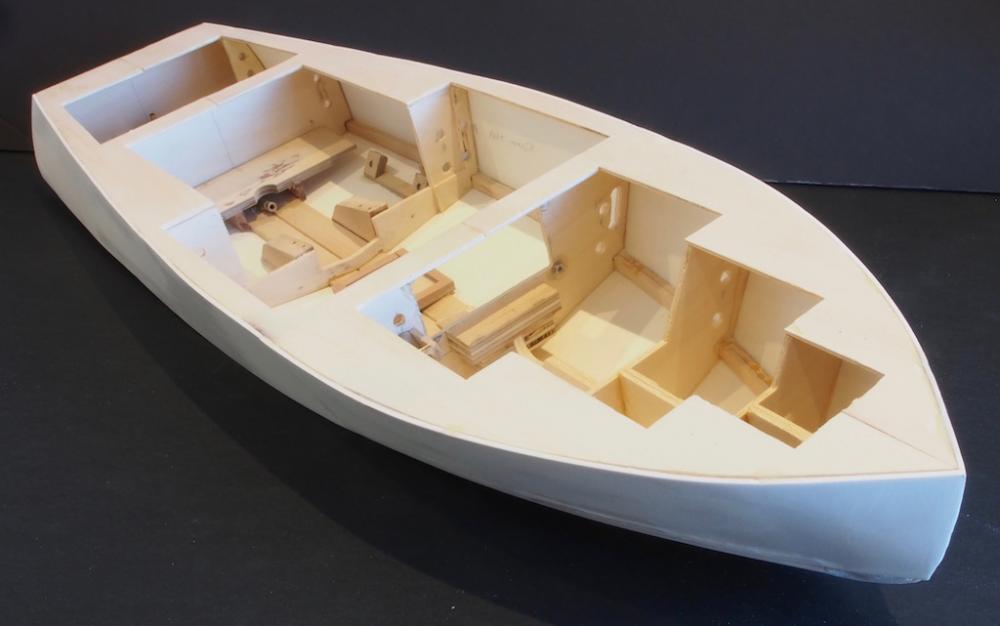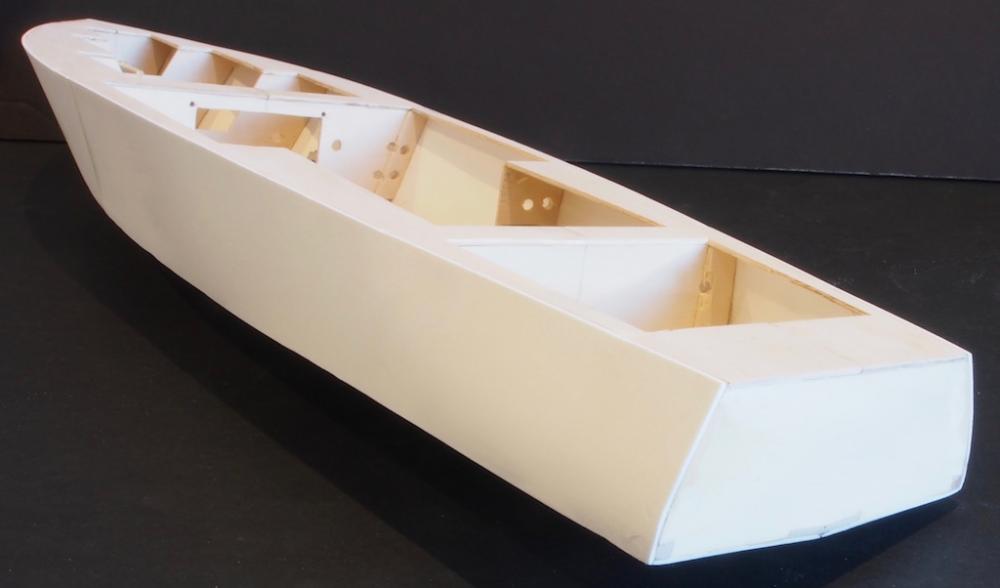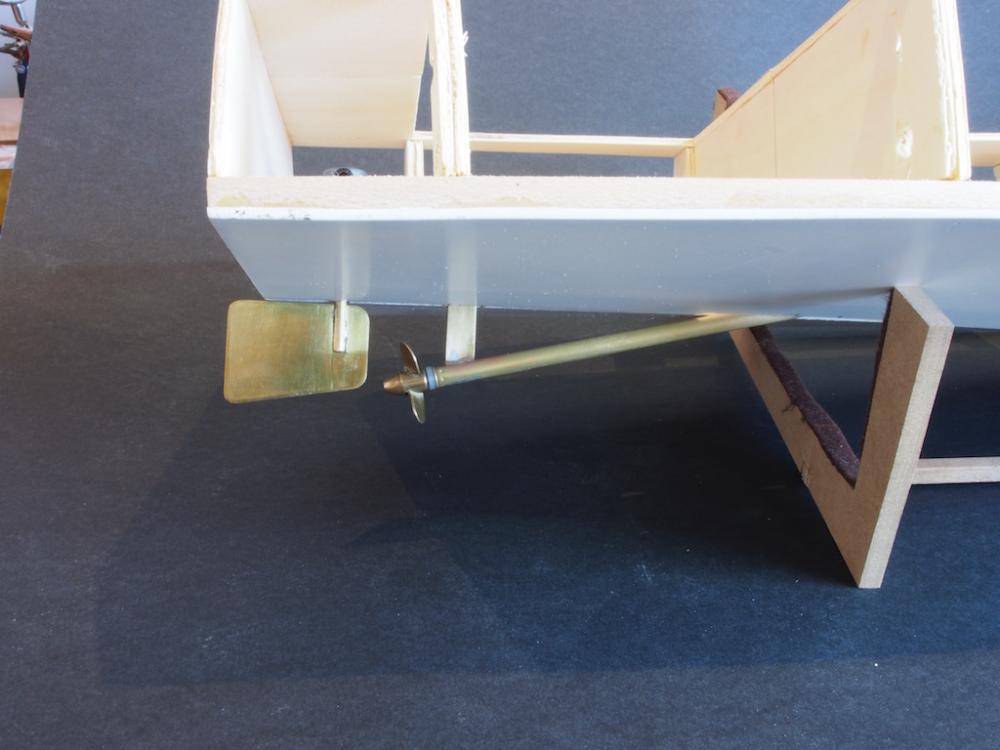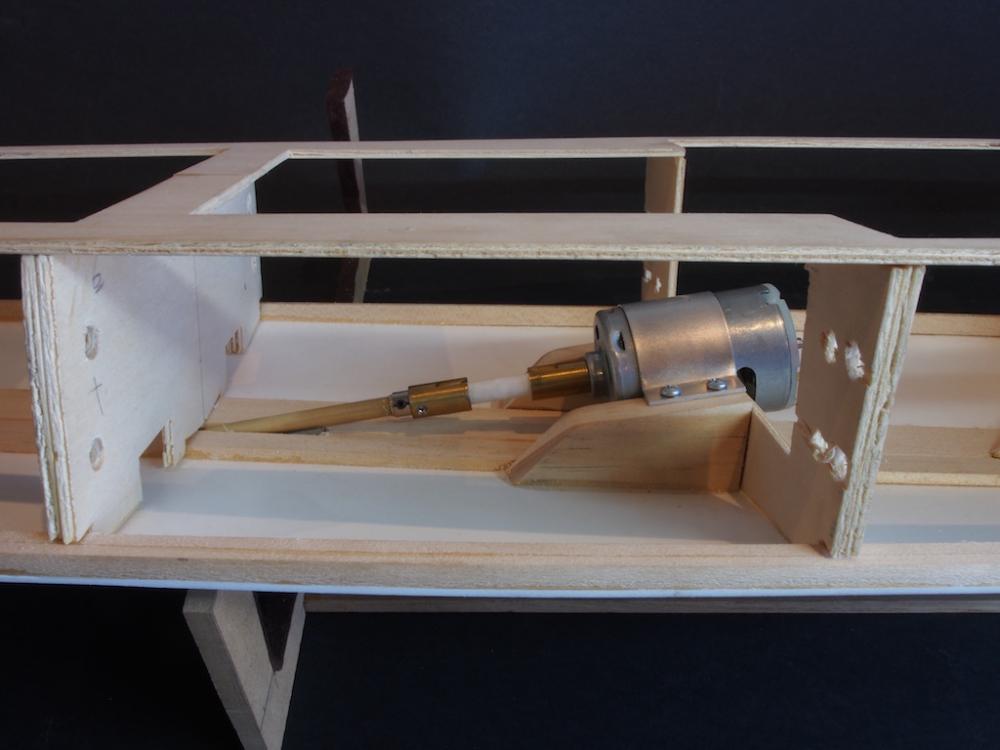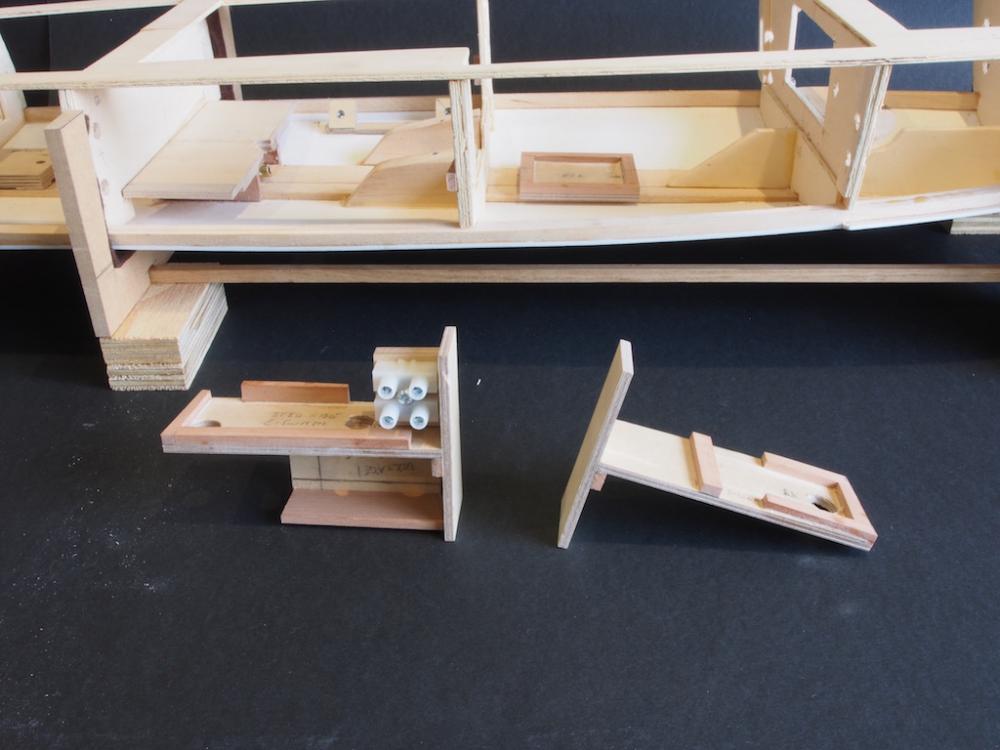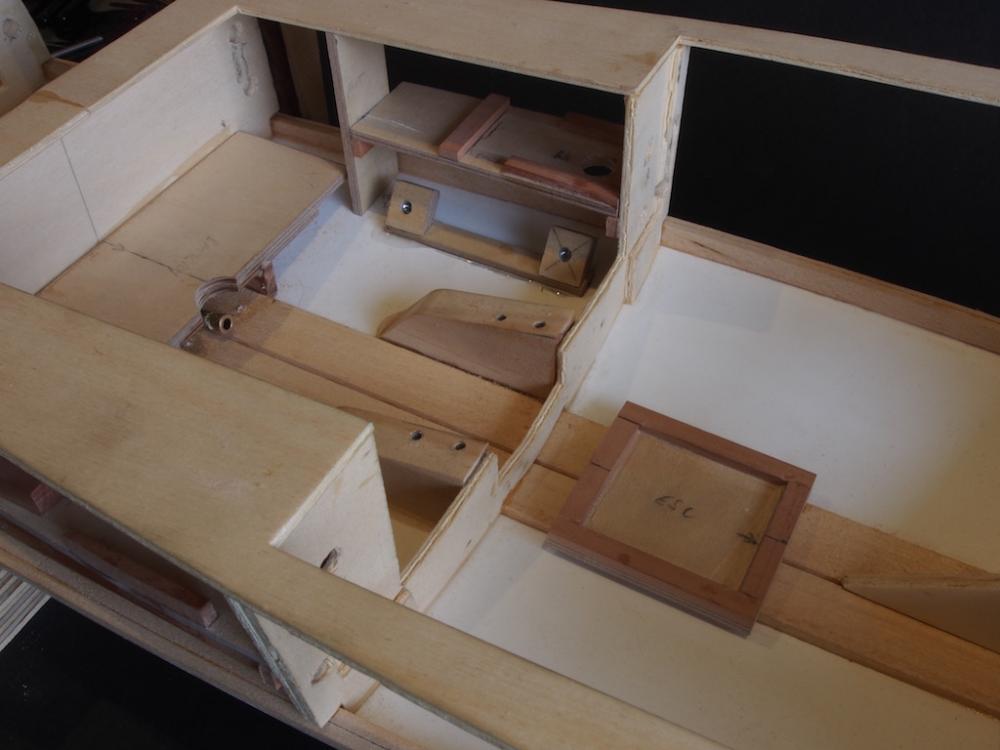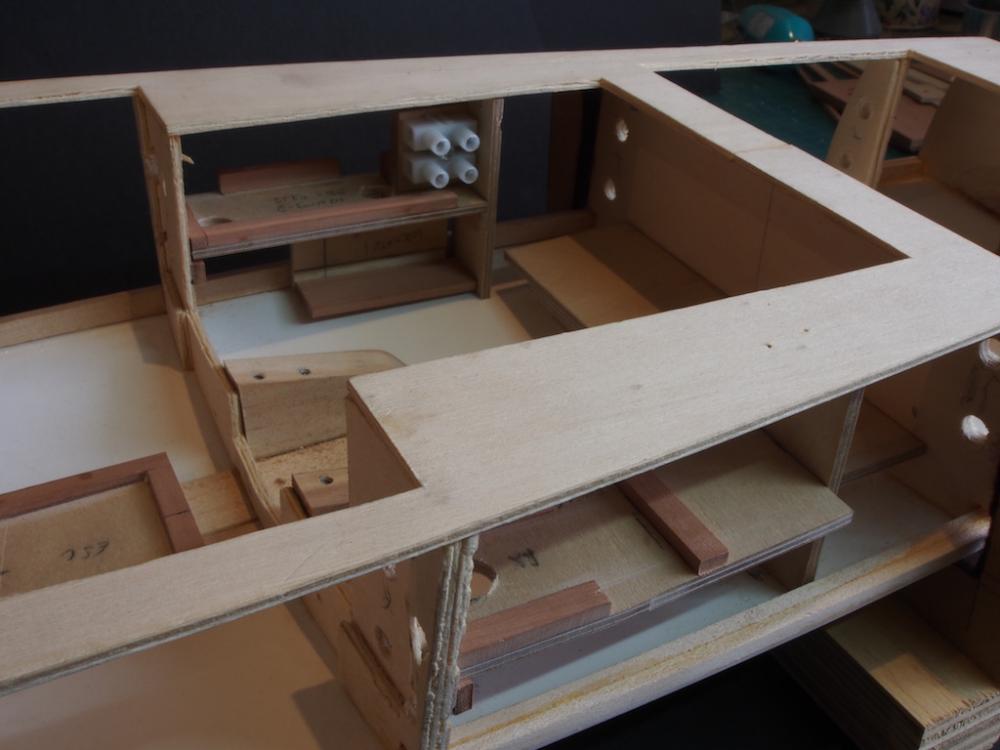-
Posts
4,891 -
Joined
-
Last visited
Content Type
Profiles
Forums
Gallery
Events
Everything posted by gjdale
-
Great news Aydin. Customer service like that is hard to find these days. I'm sure they now have one more loyal customer, and through your recommends, likely several more. Good to hear the wrist is healing - enjoy the football vacation.
- 414 replies
-
- riva aquarama
- amati
-
(and 2 more)
Tagged with:
-
Thanks Thomas, Tom - thanks for stopping by. Yes, there is a little room for adjustment and the photo might not show it very well, but the aim is to have the rudder as a continuation of the line of the prop shaft. In the end, I think the aft lower edge of the rudder will be just below the prop blades. I'll still be trying to avoid any form of grounding or collision! As the saying goes, a collision at sea can ruin your entire day!
- 339 replies
-
- dumas
- Chris-Craft
-
(and 3 more)
Tagged with:
-
Thanks Mark, you're absolutely right - had it been wood, it would have been a no-brainer. Not being used to working with plastic, the mind just wasn't clutched in to the same wavelength. Gerhard - there are more scratches and 'divots' than you can see in the photos. The whole hull will receive a skim coat of auto body filler, which will also address all of those little imperfections (and the not-so-little ones as well) The aim will be to have a near-perfect smooth and faired hull before planking proper begins.
- 339 replies
-
- dumas
- Chris-Craft
-
(and 3 more)
Tagged with:
-
Thanks for all the kind comments and the 'likes' folks. At last, I have a bit of an update... Side Underplanking The last couple of weekends have been spent doing battle with the underplanking on the sides of the hull. Similar to the bottom, the side underplanking uses four sheets of Sintra (expanded core PVC). There are two sheets per side, with one sheet running from Frame 4 aft, and the other from Frame 4 forward. The aft sheets are installed first, and then the forward sheets. The forward sheets need a little shaping to fit snugly in the overhang of the bottom sheet, and they also overlap at the stem. The instructions say to use CA glue to attach these four sheets, beginning with the aft sheet on each side. They offer no further advice about coping with the compound curves in each direction. Even Pat Matthews’ excellent book offers little further advice, although I was relieved to read that even he found installing these panels “just a bit awkward”. CA glue and I just don’t seem to get along. I have become sensitised to it, and it doesn’t take much exposure to give me flu-like symptoms for the next three days, even with the so-called ‘odourless’ varieties. When I do use it, I wear an appropriate mask to try and prevent the symptoms. Add to that, I must be the only person in the world who has trouble getting CA glue to hold. On my first attempt to glue one of the aft panels, it just popped right off again, even after using a liberal amount of ‘kicker’. So, I decided to do this job using 5-minute epoxy instead. The next issue was trying to clamp the pieces in place while the glue set and cured. There are so many compound curves on the hull, finding a way to clamp successfully takes a lot of thought and much trial and error. I ended up gluing just along the bottom edge and allowing that to fully cure before bending it to shape around the hull and gluing the top edge, sometimes in two or more sections. I even managed to snap one of the aft panels using this method, but a bit of extra epoxy and some additional sanding later on recovered that oops. The front panels were even more fun and clamping all but impossible. However, I persevered and found a way. Just as I thought I was done, the epoxy gave way and the last front panel sprang away again. After much cursing, I was chatting on Skype with Mobbsie and he asked me if I could clamp the piece in place without glue and then apply heat to relieve the stress in the plastic and hence prevent it from trying to spring back. Doh! The obvious solution was right under my nose, but until I had that conversation, it hadn’t occurred to me. So, I did exactly that. I clamped the piece in place and gently applied hot air from my heat gun. In no time at all the piece had taken the basic shape and I was able to glue it up again without it trying to fight me all the way. Thanks Mobbsie! But the fun wasn’t over yet. As I was sanding the excess plastic and glue, both forward panels separated again at the bow. A few more rude words, a quick application from the heat gun, and yet more epoxy, and we were back in business. Once the glue had cured, I finished removing most of the excess plastic using a sanding drum in the Dremel rotary tool, and then finishing with a hand sanding block to achieve a flush upper surface, a sharp chine, and a reasonable looking stem. A couple of balsa filler blocks are required at the lower end of the stem, and these are easily sanded to shape when cleaning up the rest. There a few 'divots' in the plastic sheeting from where I was a little over-zealous with the sanding drum, but these will be filled and sanded again before the outer planking is applied. In conclusion, the job would have been a whole lot easier if I had thought of using the heat gun to assist the shaping in the first instance. It would have been nice if the instructions had included that hint, but perhaps there was an assumption of knowledge there. Not much to show for two weekends worth of work, but here are a couple of pictures to bring the log up to date. The next task will be to run some tubing for the wiring for the lights, and then give the interior a coat of Finish Resin as a sealer. That may be a little while coming as I have a pretty busy week and weekend ahead.
- 339 replies
-
- dumas
- Chris-Craft
-
(and 3 more)
Tagged with:
-
Just lovely Antony. Your work is immaculate.
- 99 replies
-
- turtle ship
- korean
-
(and 1 more)
Tagged with:
-
Sorry to hear of your strained wrist Aydin - best wishes for a speedy recovery. I too have missed your updates.
- 414 replies
-
- riva aquarama
- amati
-
(and 2 more)
Tagged with:
-
I'm not normally a plastics kinda guy, but this looks like a really interesting build Greg so I think I'll pull up a chair and follow along too.
- 342 replies
-
- dreadnought
- zvezda
-
(and 2 more)
Tagged with:
-
Ah, the offer of Sacher Torte and coffee! Okay, I'm in then! Looks like this will be an interesting build Gerhard, and the finished boat will be a real beauty. Your Admiral has good taste and I'm sure will be delighted to see you starting this.
- 72 replies
-
- bootlegger
- speedboat
-
(and 1 more)
Tagged with:
-
Nice to see an update Mobbsie. She's looking might fine and the inclusion of some nicer timber really does show her off nicely. Looking forward to the next update.
- 129 replies
-
- armed launch
- panart
-
(and 1 more)
Tagged with:
-
"Outstanding" hardly seems to do justice to your work Nils. "Breath-taking" comes a little closer..... Just love the double laundry peg clamp - you may have just started a whole new cottage industry here!
- 2,625 replies
-
- kaiser wilhelm der grosse
- passenger steamer
-
(and 1 more)
Tagged with:
-
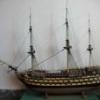
THE 74-GUN SHIP by Jeronimo
gjdale replied to Jeronimo's topic in - Build logs for subjects built 1751 - 1800
Wonderful!- 194 replies
-
Hi Doc, Good to hear from you - your AVS is looking splendid! In answer to your question, my red heart went quite dark as soon as I applied WOP to it. I would say it is a deep reddish-brown. It still looks much the same as in the finishing photos posted here - I think that the colour in the photos is a pretty accurate representation (depending on your monitor, of course). When will you be starting your own BV Cross-Section?
- 456 replies
-
- finished
- bomb ketch
-
(and 2 more)
Tagged with:
-
Fabulous Danny, as always! Hopefully, Australia Post won't let us down and you'll have the extra rope in a couple of days.
- 268 replies
-
Thanks guys, Mobbsie - I get what you're saying, but I don't think it will be possible without spoiling the overall appearance. I'll just have to drive carefully and avoid the shallows and snags (famous last words!) Gerard - overall length is 28 inches. Mark - yeah, crap happens, but at least the broken die was only a $20 piece of crap! The replacement in HSS cost me three times that. The upside is that my home-made die holder worked exactly as planned.
- 339 replies
-
- dumas
- Chris-Craft
-
(and 3 more)
Tagged with:
-
Thanks for the kind words Zoltan. If you PM me with your email address, I will send you a copy of the materials list spreadsheet. Might take a couple of days though as I'll be travelling at the beginning of the week.
- 456 replies
-
- finished
- bomb ketch
-
(and 2 more)
Tagged with:
-
Drive Train Progress continues, albeit very slowly! My new stainless steel drive shaft arrived and I was ready to cut the 5-40 thread with my brand new self-made die holder………or so I thought……. I was having trouble getting a thread started and being completely new at this, I decided to pop in and have a chat to my new best friends at the local machining supplies shop. Blinding Glimpse of the Obvious #347: using a carbon steel die to cut a thread on stainless steel is probably not the smartest move known to man…. Doh! However, it might work once or twice before the die destroyed itself, they told me. By the way, that’s a nice looking die holder you’ve made there, they said, but it’s missing something…….it needs another hole tapping to take a tapered grub screw to open the die up a bit. That way, you might stand a chance of getting your thread cut. Doh! Back home, tapped another hole, tapered a grub screw, forced open the die a little (actually as much as I could), and after some Herculean efforts managed to complete a test run on a piece of brass rod of the same diameter. It took two passes, but once the first one was done, the second went much more easily. Okay, so much for trials…onto the real McCoy now. Once again forced the die open as much as possible and with even greater effort managed to cut my thread, again using two passes. Tested with a standard nut and all was good. Feeling very pleased with myself, went to take the die out of the holder, and it came out in two pieces….. Needless to say, I am now the proud owner of a (very expensive) HSS 5-40 die. With that vital task completed, I was able to assemble the drive train. In this picture, you can see the drive shaft screwed into my after-market brass propeller and protruding through my new stuffing box with sintered bronze bearings. You can also see the brass strut that is silver-soldered to the stuffing tube. This replaces an ugly plastic skeg provided in the kit. The rudder is temporarily mounted to check for clearance between prop and rudder. At the other end, the motor has been temporarily mounted and a dummy dog-bone has been used to create a rigid assembly. After this picture was taken, I subsequently decided to shorten the stuffing tube by about 5 mm in order to bring the motor further aft in its mounting, to provide additional clearance in front of it. At this point the stuffing tube was tack glued in place with epoxy and once set, the running gear removed and the stuffing tube permanently set in place by filling the slot around it with a mixture of epoxy and micro-balloons (a polyester filling compound). Electronics Housing Then it was time to make up some shelves and racks to hold the various electronic components. Space is very limited and with the extras that I am adding to this model, the positioning of the equipment needs to be carefully thought through. Fortunately, someone else has been there before me and I have basically followed his placement. In the next picture, you can see the two side-racks that will be inserted and glued in place shortly. Inside the engine compartment, you can see the Battery shelf at the aft end, a mounting to take the fuse holder on the port side, and the tray for the Electronic Speed Control (ESC) in the forward cockpit compartment (it will be under the front seat). And finally, here are a couple of shots with the side racks dry-fitted in place. It’s now time to fit the underplanking on the sides of the hull and start closing this baby up!
- 339 replies
-
- dumas
- Chris-Craft
-
(and 3 more)
Tagged with:
-

Can i live without a BYRNES TABLE SAW
gjdale replied to shihawk's topic in Modeling tools and Workshop Equipment
That's great news Jim. At least now Donna want need to put you on half-pay to cover the costs! -

Mill Column for Sherline Lathe
gjdale replied to mikiek's topic in Modeling tools and Workshop Equipment
Mike, It might be a good solution if budget is your driving concern. However, don't overlook the (in)convenience factor. Mr Murphy stipulates that when you want to use the Mill, it will be configured for lathe work, and when you want to use the lathe it will be configured for mill work. And then there are those occasions when you will want to go straight from lathe to mill. If you can live with this, then go for it. Otherwise, splash the extra cash and buy the separate mill. I have both and don't regret a cent spent on either. Go on, you know you want to.........
About us
Modelshipworld - Advancing Ship Modeling through Research
SSL Secured
Your security is important for us so this Website is SSL-Secured
NRG Mailing Address
Nautical Research Guild
237 South Lincoln Street
Westmont IL, 60559-1917
Model Ship World ® and the MSW logo are Registered Trademarks, and belong to the Nautical Research Guild (United States Patent and Trademark Office: No. 6,929,264 & No. 6,929,274, registered Dec. 20, 2022)
Helpful Links
About the NRG
If you enjoy building ship models that are historically accurate as well as beautiful, then The Nautical Research Guild (NRG) is just right for you.
The Guild is a non-profit educational organization whose mission is to “Advance Ship Modeling Through Research”. We provide support to our members in their efforts to raise the quality of their model ships.
The Nautical Research Guild has published our world-renowned quarterly magazine, The Nautical Research Journal, since 1955. The pages of the Journal are full of articles by accomplished ship modelers who show you how they create those exquisite details on their models, and by maritime historians who show you the correct details to build. The Journal is available in both print and digital editions. Go to the NRG web site (www.thenrg.org) to download a complimentary digital copy of the Journal. The NRG also publishes plan sets, books and compilations of back issues of the Journal and the former Ships in Scale and Model Ship Builder magazines.




